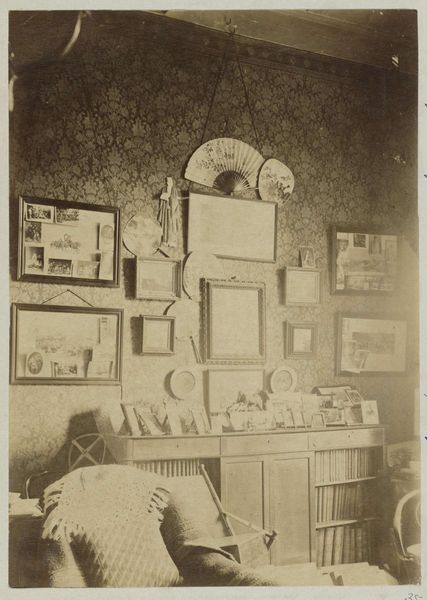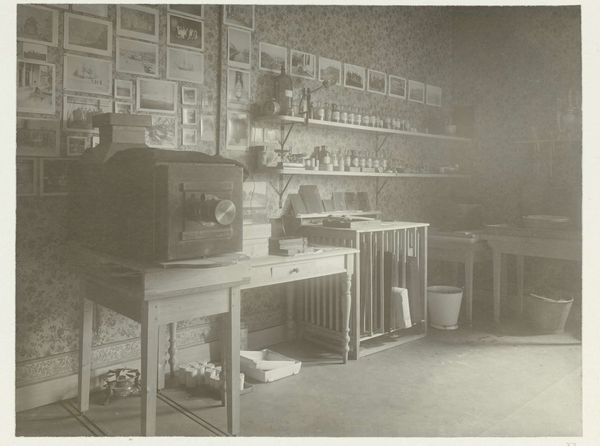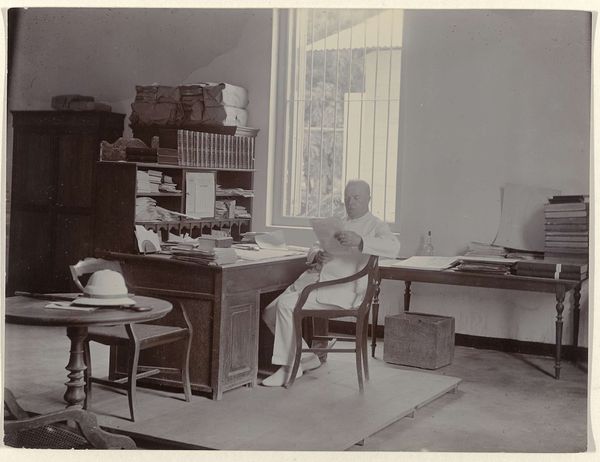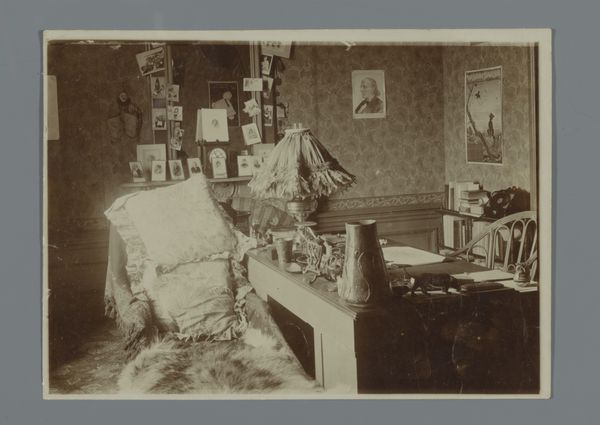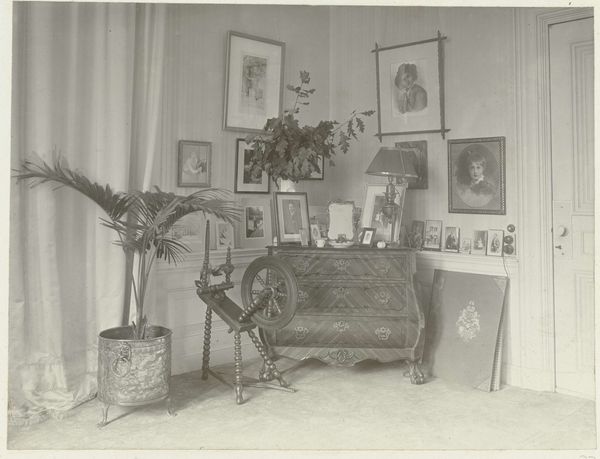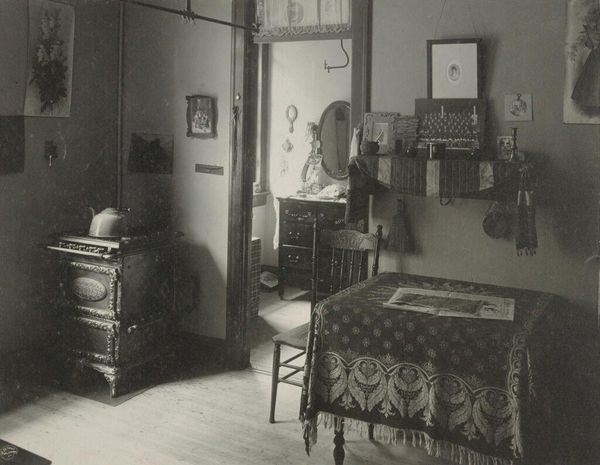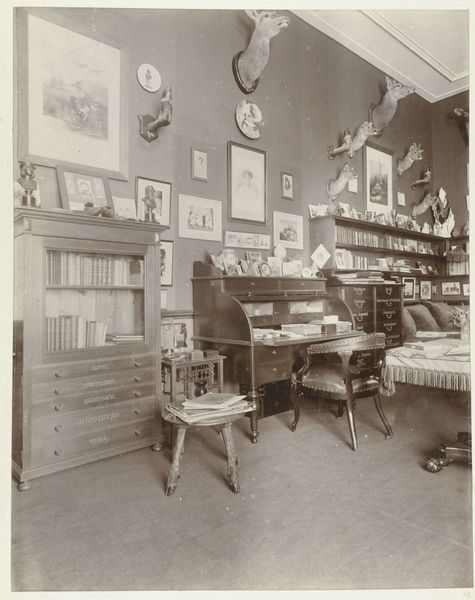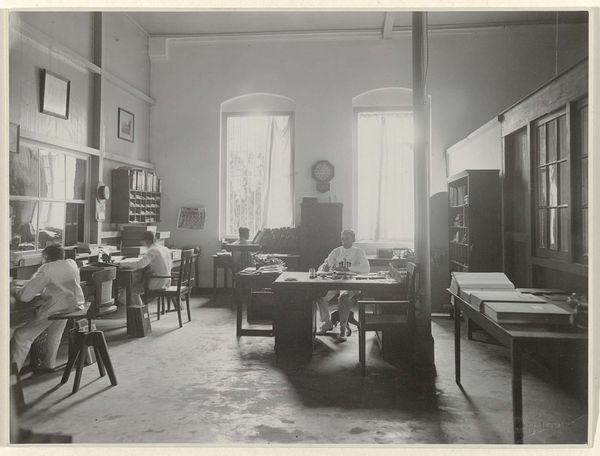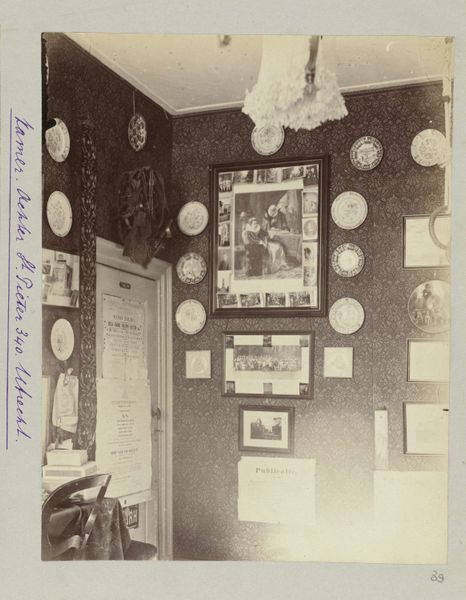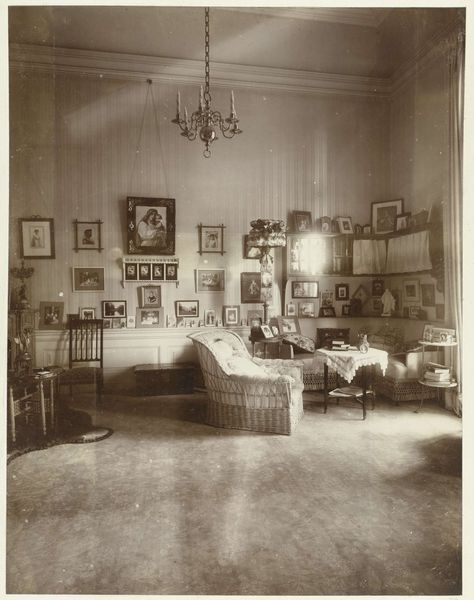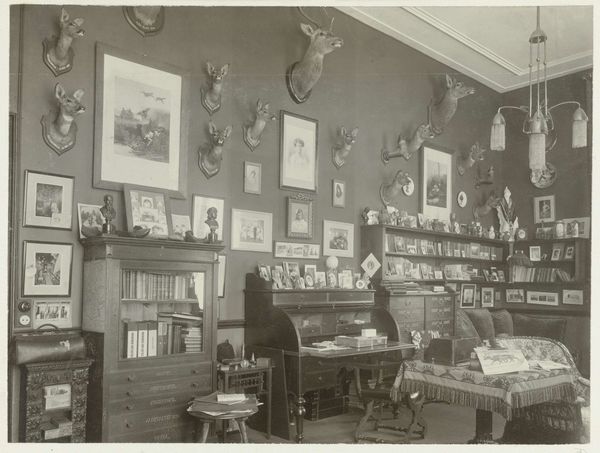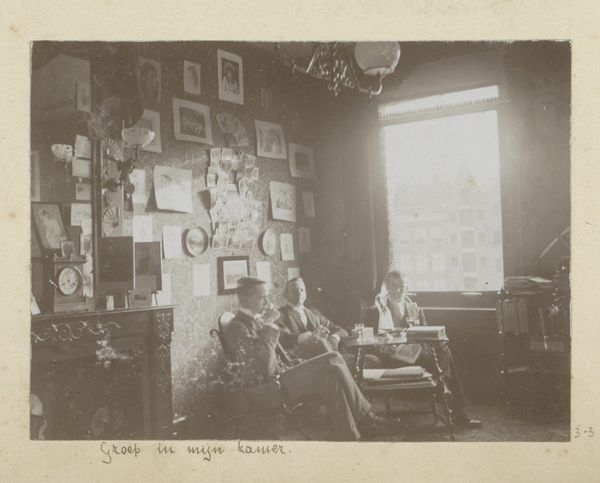
Werkkamer in landhuis De Wildbaan, Driebergen, waar de fotograaf zijn foto's afwerkte 1903 - 1907
0:00
0:00
photography, gelatin-silver-print
#
portrait
#
dutch-golden-age
#
photography
#
gelatin-silver-print
Dimensions: height 335 mm, width 520 mm, height 169 mm, width 216 mm
Copyright: Rijks Museum: Open Domain
Curator: Here we have Henry Pauw van Wieldrecht’s “Werkkamer in landhuis De Wildbaan, Driebergen, waar de fotograaf zijn foto's afwerkte,” a gelatin-silver print, dated sometime between 1903 and 1907. Editor: The room feels busy but somehow also still and serene. There's something quite striking about the textures, from the patterned wallpaper to the stacks of wooden crates. It's all so meticulously arranged, and almost clinical. Curator: Absolutely. As a social document, this image presents us with an intriguing view of artistic labor in the early 20th century. It's not just a workspace; it's a carefully constructed performance of artistic identity within the affluent Dutch Golden Age milieu. Note the multitude of photographs, predominantly landscapes and portraits, pinned salon-style across the wall. Editor: Right, and you see that the means of production are integral to the subject of the piece, highlighting the handcraft within a burgeoning age of mechanically produced images. I'm fascinated by the table—a place where the silver gelatin process took form, where materials were carefully considered, where manual labor transformed chemicals into a permanent image. Curator: It underscores the power of art institutions like the Rijksmuseum to collect and elevate even seemingly personal spaces into objects of public significance. Editor: Consider what goes into setting this shot up: what types of objects should be in sight and what ones should be removed, also who the image is intending to capture and for what purposes. The whole composition foregrounds an entire process of producing an artwork which almost certainly relied on laborers. Curator: Very true. Ultimately, van Wieldrecht delivers an intimate, yet consciously curated vision. The interplay between art, labor, and the societal lens is worth reflecting on. Editor: I’m leaving with a richer sense of the materials used, how spaces and art objects create status and give identity, and the kind of labor and planning van Wieldrecht and other individuals involved devoted.
Comments
No comments
Be the first to comment and join the conversation on the ultimate creative platform.
